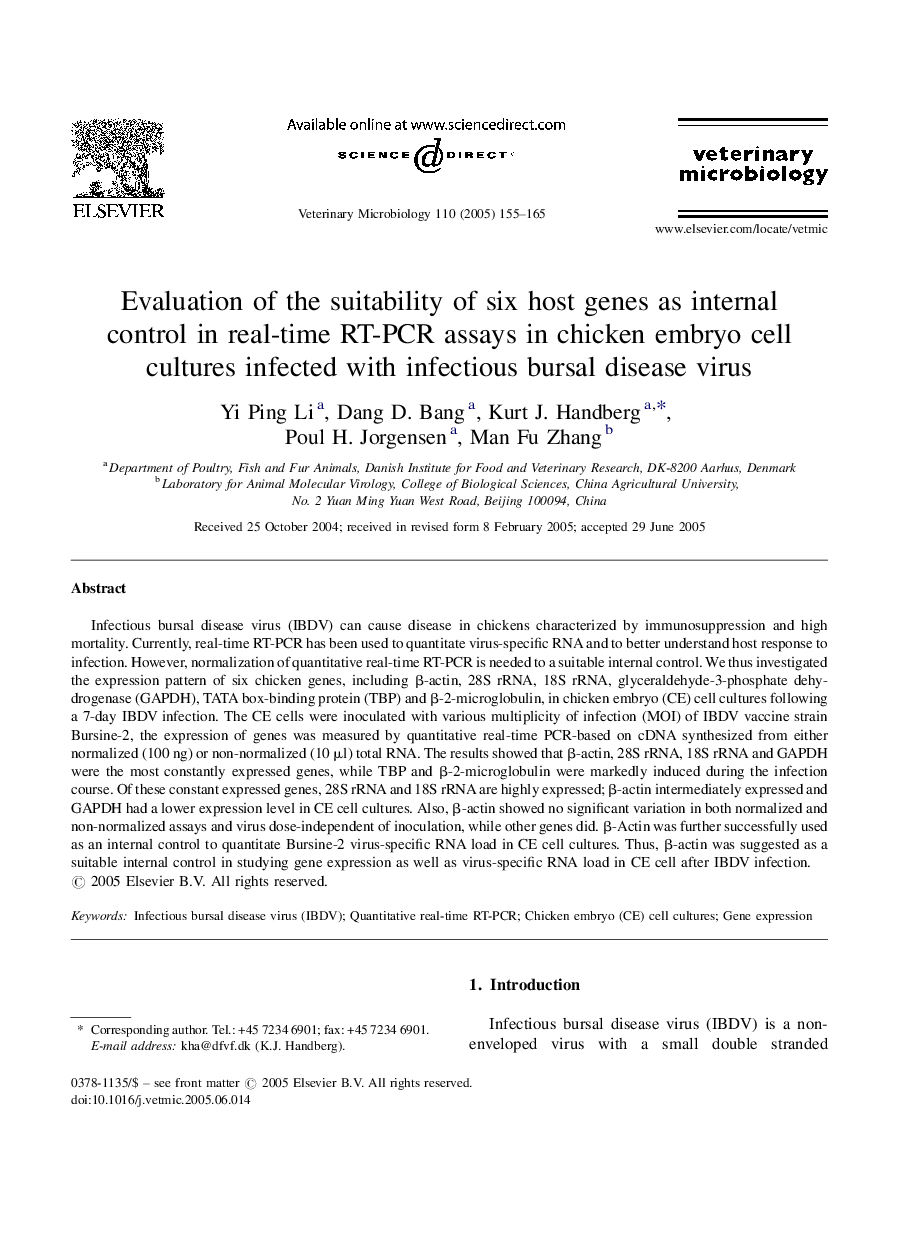| Article ID | Journal | Published Year | Pages | File Type |
|---|---|---|---|---|
| 8989397 | Veterinary Microbiology | 2005 | 11 Pages |
Abstract
Infectious bursal disease virus (IBDV) can cause disease in chickens characterized by immunosuppression and high mortality. Currently, real-time RT-PCR has been used to quantitate virus-specific RNA and to better understand host response to infection. However, normalization of quantitative real-time RT-PCR is needed to a suitable internal control. We thus investigated the expression pattern of six chicken genes, including β-actin, 28S rRNA, 18S rRNA, glyceraldehyde-3-phosphate dehydrogenase (GAPDH), TATA box-binding protein (TBP) and β-2-microglobulin, in chicken embryo (CE) cell cultures following a 7-day IBDV infection. The CE cells were inoculated with various multiplicity of infection (MOI) of IBDV vaccine strain Bursine-2, the expression of genes was measured by quantitative real-time PCR-based on cDNA synthesized from either normalized (100 ng) or non-normalized (10 μl) total RNA. The results showed that β-actin, 28S rRNA, 18S rRNA and GAPDH were the most constantly expressed genes, while TBP and β-2-microglobulin were markedly induced during the infection course. Of these constant expressed genes, 28S rRNA and 18S rRNA are highly expressed; β-actin intermediately expressed and GAPDH had a lower expression level in CE cell cultures. Also, β-actin showed no significant variation in both normalized and non-normalized assays and virus dose-independent of inoculation, while other genes did. β-Actin was further successfully used as an internal control to quantitate Bursine-2 virus-specific RNA load in CE cell cultures. Thus, β-actin was suggested as a suitable internal control in studying gene expression as well as virus-specific RNA load in CE cell after IBDV infection.
Related Topics
Life Sciences
Agricultural and Biological Sciences
Animal Science and Zoology
Authors
Yi Ping Li, Dang D. Bang, Kurt J. Handberg, Poul H. Jorgensen, Man Fu Zhang,
